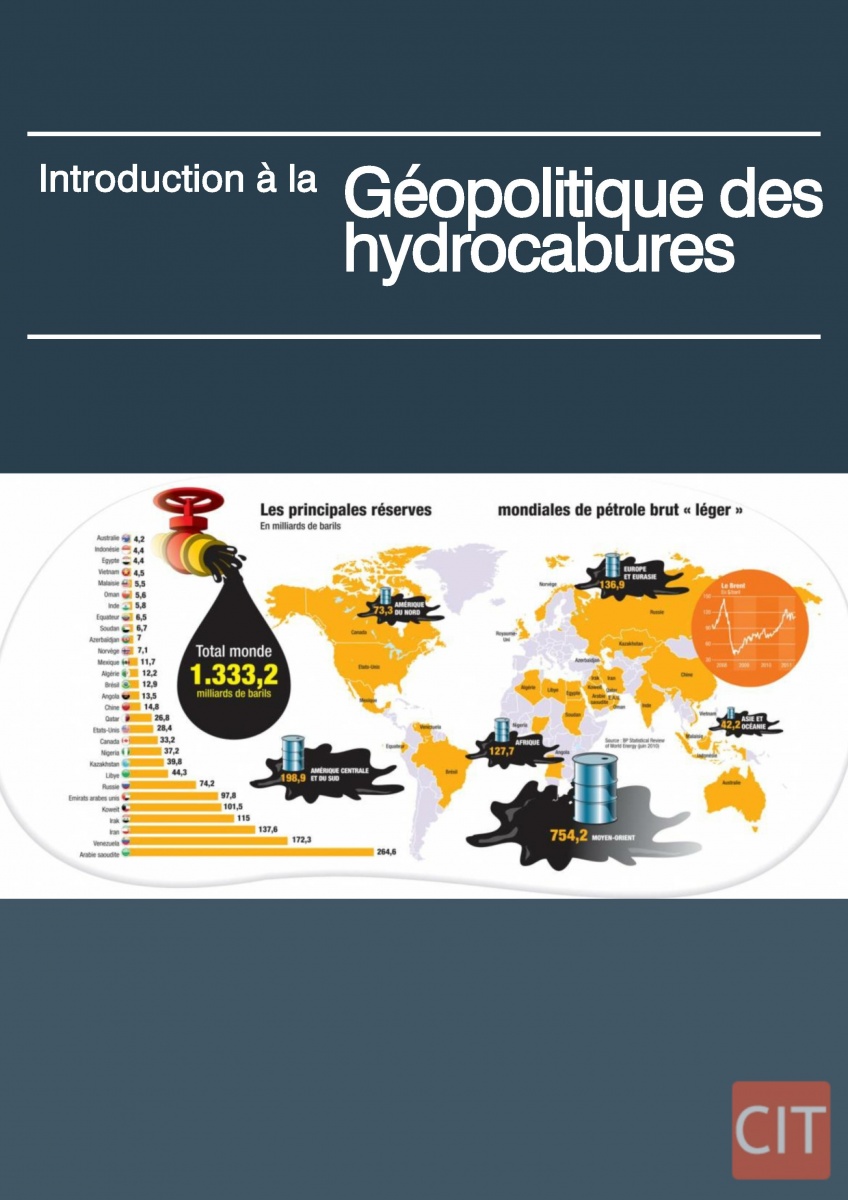Course in geopolitics for traders

Course Description
The beginning of the 21st century has been marked by a significant rise in the price of fuels and energy. Oil, which was just $10 a barrel in 1999, was at $120 by the end of 2012 (after having reached $147 in 2008). This reflects both a rise in the demand and the cost. With rising demands in mind, particularly in developing countries, it becomes clear that the global energy market needs to be modified. In this context, the course provides a clear presentation and explanation of the mechanisms of operation within the oil, gas and electricity markets, as well as their advantages and their limitations. The course starts with the Mechanisms of Price Fixing of Hydrocarbons in the Market, in which one of our specialists explains major principles in a recent publication.
In the time of economic globalization, the course works to analyze the consequences of the market deregulation movement on the prices of different energies, and attempts to respond to several major questions: Why is price volatility so high? Who will take investments risks now? Will the major stakeholders within the energy market be in a dominant position?
 Course Content
Course Content
- General information on energy, markets and energy markets
- Crude oil and petroleum product markets
- Gas markets
- Electricity markets
- Open questions and perspectives
In-Course learning is supported by a reference work that contains an ensemble of diverse publications, allowing students to deepen their reflection. Reports about current ‘hot topics’, such as of fossil fuels management, for example, are published regularly, and made available to students.
Extract from the course introduction
The course focuses on the physical and paper markets of oil, petroleum products, and gas, and electricity.
The price of gas is based on the suppliers’ prices and global demands, as discussed in our article on the mechanisms of price fixing. In this respect, it is a market price. For now, we won’t go into extreme detail on the constraints of production, the determinants of global demand or price fixing theory. Instead, we will focus on the principal elements, which are necessary for the description of constraints imposed on physical and paper markets, and on determining their characteristics.
 The course presents the operation of principal markets as they exist today. It examines, in particular, the crude oil market, which is the oldest and most elaborate when compared to other energy markets. Historically, this market was developed under the model of the stock exchange. It responded to a clear industrial finality of risk coverage and price stabilization. This class presents the stakeholders in the market (trading companies, speculators, etc.) and the increasingly sophisticated trading tools which have appeared progressively. It explains market coverage and market futures, and stresses the importance of the concrete functions of theories, as well as their operational descriptions.
The course presents the operation of principal markets as they exist today. It examines, in particular, the crude oil market, which is the oldest and most elaborate when compared to other energy markets. Historically, this market was developed under the model of the stock exchange. It responded to a clear industrial finality of risk coverage and price stabilization. This class presents the stakeholders in the market (trading companies, speculators, etc.) and the increasingly sophisticated trading tools which have appeared progressively. It explains market coverage and market futures, and stresses the importance of the concrete functions of theories, as well as their operational descriptions.
The course works to explain the progressive construction of market rules. It discusses, for example, questionable practices (manipulations, squeezes, etc.) and possible alternative solutions to these problems. Here, we take the opportunity to remind students of the distinguishing characteristics of commodity markets, and what sets them apart from equity markets and other financial products. The development of the physical markets of oil and petroleum products has contributed to the introduction of competition in the sector, and is gradually bringing about the disappearance of cartels and energy company monopolies.
Competition authorities and theoreticians have constructed a model wherein the development of the physical market, with its diversity of participants and transactions, is a necessary condition for the deregulation of energy markets.
The creation of the physical markets of gas and electricity is the result of voluntary action from deregulatory governments and competition authorities. At first, the physical market wasn’t industrial, even if the market participants saw its industrial potential. In some cases, going through the market is made necessary between the producer and the buyer. An example of this would be in the oil market. The publication presents the similarities between these energies (investment costs, industrial structuring, etc.) and the differences that had an impact on the creation of these markets. The problems of product quality have different implications for each market. Diversification (into green energy, for example) doesn’t carry the same logic within these markets, in particular because of the extremely strong physical constraints on transporting these energies.



 The course presents the operation of principal markets as they exist today. It examines, in particular, the crude oil market, which is the oldest and most elaborate when compared to other energy markets. Historically, this market was developed under the model of the stock exchange. It responded to a clear industrial finality of risk coverage and price stabilization. This class presents the stakeholders in the market (trading companies, speculators, etc.) and the increasingly sophisticated trading tools which have appeared progressively. It explains market coverage and market futures, and stresses the importance of the concrete functions of theories, as well as their operational descriptions.
The course presents the operation of principal markets as they exist today. It examines, in particular, the crude oil market, which is the oldest and most elaborate when compared to other energy markets. Historically, this market was developed under the model of the stock exchange. It responded to a clear industrial finality of risk coverage and price stabilization. This class presents the stakeholders in the market (trading companies, speculators, etc.) and the increasingly sophisticated trading tools which have appeared progressively. It explains market coverage and market futures, and stresses the importance of the concrete functions of theories, as well as their operational descriptions.






 All rights reserved.
All rights reserved.